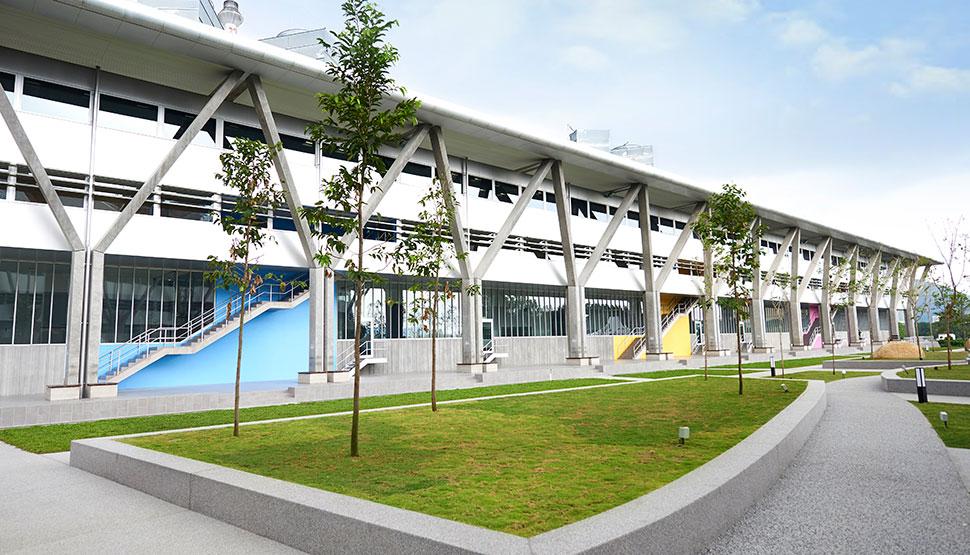Building resilience from the ground up

When someone is having a heart attack or stroke, a fast infusion of clot-dissolving medicine can help restore blood flow, potentially saving their life and improving their recovery.
For cancer patients experiencing severe nausea from chemotherapy, anti-nausea medication through infusion therapy can improve their ability to eat, drink and function.
If a bacterial bug—like meningitis, strep or staph—isn't responding to oral antibiotics, intravenous antibiotics often stop an increasingly dangerous infection from becoming a dire one.
Dehydration. Anemia. Chronic pain. Colitis. Multiple sclerosis. The list of conditions that call for infusion therapy is extensive and wide-ranging. As one of the leading manufacturers of intravenous therapy-related products, B. Braun drives advancements in healthcare. Infusion therapy is just one of many areas where the medical technology company based in Germany is delivering innovative, efficient and sustainable solutions to the healthcare industry.
Identifying risk
Its facility in Penang, Malaysia, plays an important role in the German manufacturer's global business. One of the company's most popular IV therapy products is produced in Penang. Any downtime at the Penang facility could affect the production process. In the facility's original layout, the fire risk was large enough to make securing insurance coverage very expensive. There was a risk of damage and business disruption.
Mapping out improvements
Having integrated its business coverage with FM, B. Braun applied critical findings from a business impact analysis to support additional engineering solutions. B. Braun chose to pursue FM's Highly Protected Risk (HPR) designation for its facility in Penang as well as for others around the world. The HPR designation validates that an organisation has implemented all reasonable loss prevention measures—provided in the form of engineering recommendations—to protect buildings, equipment and contents from hazards like fire, equipment breakdown and natural disasters.
The Penang facility initially had 17 open recommendations based on FM's site surveys. The recommendations provided a clear roadmap for B. Braun to reduce its exposure and achieve HPR status.
The HPR journey
B. Braun renovated its Penang site in the course of several major construction projects, with the HPR designation as the goal and the open recommendations as a guide. In the early stages, FM engineers made 24 visits to Penang to consult with B. Braun on material selection, installation and overall construction.
As a first step, B. Braun implemented a pivotal Maximum Foreseeable Loss (MFL) separation between several buildings to logistically cut fire-related risk exposure in half.
The MFL separation was only the beginning. Over the course of eight years, B. Braun and FM worked diligently and methodically to close the open recommendations. From improving smoke control to splitting up production and installing FM Approved flood barriers, sprinklers and a fire-rated wall between transformers and switchgear, B. Braun remained committed to its mission of protecting and improving the health of people around the world through intelligent risk management of its facilities. Production in Penang continued throughout the process.
"We had to balance providing stability and necessary products to the market while enhancing our operational resilience," said Dr. Jürgen Schloesser, senior vice president, chief of operations for B. Braun "There was no shutting down."
Celebrating HPR designation
In 2023, B. Braun received the HPR designation for its Penang facility. Much more than simply a bureaucratic formality, the HPR designation intertwines with B. Braun's sustainability initiatives. For example, planned photovoltaic panels on all Penang buildings will create a rooftop solar farm. HPR status also helps control the company's insurance premiums, in turn enhancing profitability.
In bolstering its business continuity, B. Braun is raising the standard for resilience regionally and supporting healthcare supply chains globally. Risk engineering is becoming more and more ingrained in the company's culture as B. Braun continues its partnership with FM, which represents a crucial component of B. Braun's commitment to risk mitigation.
"With FM, we have more than a supplier of insurance – we're working with a true partner on a project level to find solutions," said Christoph Mueller, managing director of B. Braun Medical International S.L.
Mueller added that achieving the HPR designation represents a "piece of the puzzle" to supporting B. Braun's vision to protect and improve the health of people around the world. "Living our purpose means we are delivering stability and ensuring a continuous supply of products to the market," he said.
For a family-owned company with more than 60,000 employees worldwide and a 180-plus-year history, risk improvement isn't just an exercise in compliance. It's a means of building resilience so that the innovation and tradition can continue.
"We don't think solely in terms of year-to-year planning," said Sandra Kreuch, managing director of B. Braun's in-house insurance broker. "We have a broader perspective of risk management that spans decades and generations."
